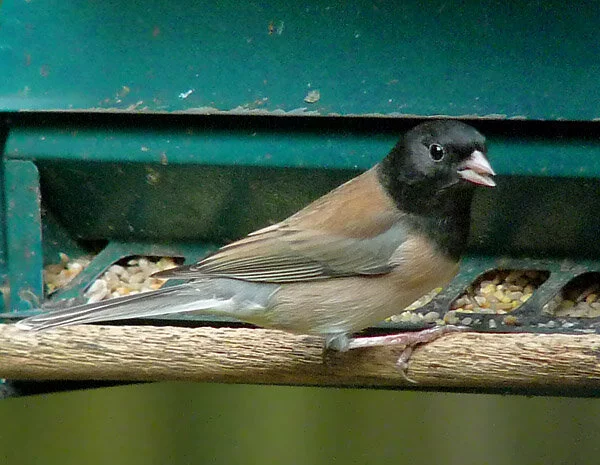National Bird Feeding Month
February is National Bird-feeding Month, and this year’s theme is “Winter Comforts — Feed the Birds and Keep Them Happy and Healthy.” How and when did this designation begin? Turns out it all started in February of 1994 when John Porter, a Republican representative from Illinois, proposed it in the United States House of Representatives. His proclamation is worth reading.
“Mr. Speaker, I would like to recognize February, one of the most difficult months in the United States for wild birds, as National Bird-feeding Month. During this month, individuals are encouraged to provide food, water, and shelter to help wild birds survive. This assistance benefits the environment by supplementing wild birds’ natural diet of weed seeds and insects. Currently, one-third of the US adult population feeds wild birds in their backyards.
“In addition, Mr. Speaker, backyard bird-feeding is an entertaining, educational, and inexpensive pastime enjoyed by children and adults. Bird-feeding provides a needed break from today’s frantic lifestyles. Adults enjoy the relaxation and peacefulness afforded by watching birds — nature serves to relieve the stress and can get one’s day going on a tranquil note.
“Young children are naturally drawn to the activities involved in feeding wild birds, which can serve as excellent educational tools. Children can identify different species of birds with a field guide and can learn about the birds’ feeding and living habits. These observations can then provide excellent research opportunities for school projects and reports.
“Feeding wild birds in the back yard is an easy hobby to start and need not overtax the family budget. It can be as simple as mounting a single feeder outside a window and filling it with birdseed mix. For many people, the hobby progresses from there. They discover the relationship between the type and location of feeders, and the seeds offered in them, and the number and varieties of birds attracted. Parents can challenge an inquisitive child’s mind as they explore together these factors in trying to encourage visits by their favorite birds.”
If you’ve decided to feed your backyard birds, you can start by simply mounting a single feeder outside a window and filling it with birdseed. Information on placement, types of feeders, and more can be found on-line.
Keep in mind that it’s critical to feed birds the right food. Much as you wouldn’t feed a starving child a bag of potato chips or cookies, you don’t want to feed the birds foods that will actually hurt them rather than nourish them. Here are five common food choices that are harmful to birds:
Spoiled or stale seed — Be sure to replace the food often. Damp seed gets moldy, and birds don’t like food that’s been sitting around any more than you do.
Bread — This provides very little nourishment to birds.
Potato chips — The salt and processed nature of these snacks is unhealthy for birds.
Popcorn — Again, the salt is bad for them as are the processed oils used for popping.
Sweets — Baked goods and candy are not good because of all the sugar and processed ingredients.
The best foods include sunflower seeds, thistle, nuts, suet, and millet.
Blog post provided by BirdNote. February 2018.

